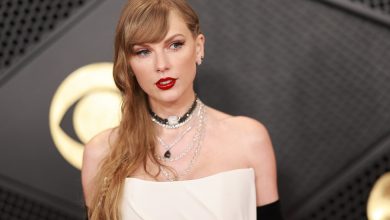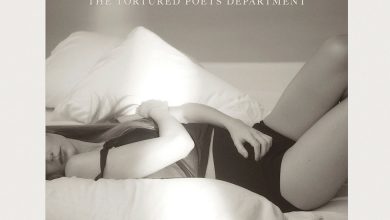Nipsey Hussle Murder Trial: What to Know

More than three years after the fatal shooting of the rapper Nipsey Hussle, a proudly local Los Angeles artist whose killing reverberated far beyond the world of West Coast hip-hop, the trial of the accused gunman, Eric R. Holder Jr., is finally underway. Jury selection in the case, which had been repeatedly delayed because of the Covid-19 pandemic, began on June 2. Opening arguments are expected to start this week, with the trial likely to last about four weeks.
Hussle, whose real name was Ermias Asghedom, was shot and killed on March 31, 2019, outside a clothing store he owned in South Los Angeles, with the police soon attributing the attack to a personal dispute. Two days after the shooting, which also wounded two bystanders, Mr. Holder, then 29, was arrested and charged with murder, attempted murder and possession of a firearm by a felon. He pleaded not guilty and has since been held in lieu of $6.5 million bail.
According to court records, Los Angeles County prosecutors plan to argue that Mr. Holder and the 33-year-old Hussle, two old acquaintances who belonged to the same street gang, had a chance encounter in a strip mall parking lot, during which the rapper mentioned neighborhood rumors that Mr. Holder had cooperated with law enforcement — “a very serious offense” in the gang world. Minutes later, prosecutors say, Mr. Holder returned with two handguns and began firing repeatedly. Here is what else to know about the case.
Who was Nipsey Hussle?
A workmanlike rapper with underground credentials and an A-list network of supporters, Hussle was more than 15 years into his music career when he released his proper debut album in 2018. Before the Grammy-nominated “Victory Lap,” Hussle had built a career that was richer in industry respect and good will than hit records, though he collaborated widely with artists like Snoop Dogg, Drake and Rick Ross. Known for his independent business ethos and novel marketing ideas, like the limited-edition $100 mixtape “Crenshaw,” Hussle had partnered with Jay-Z’s Roc Nation management company as he eyed a move toward the mainstream.
A self-proclaimed member of the Rollin’ 60s Crips, Hussle had also made a name for himself as a community ambassador and an entrepreneur in his South Los Angeles neighborhood. While seeking to stem gang violence in the area, he preached Black empowerment through business ownership, reinvesting his earnings as a musician in the place where he grew up.
With a group of backers, Hussle had bought the strip mall at the corner of Crenshaw Boulevard and Slauson Avenue that housed his Marathon clothing store, while also helping to open a nearby co-working space dedicated to increasing diversity in science, technology, engineering and mathematics.
At the same time, even as Hussle was praised after his death as an inspirational neighborhood fixture and a peacemaker, his properties were the subject of a longstanding investigation by the Los Angeles Police Department and the city attorney’s office, which considered the area a Rollin’ 60s stronghold.
Some 20,000 people attended Hussle’s public memorial at the Staples Center in Los Angeles, where a statement from President Barack Obama highlighted the rapper’s life as “a legacy worth celebrating.”
What happened on the day of the shooting?
That Sunday afternoon, according to grand jury transcripts, Hussle arrived at the shopping plaza for an unannounced visit, as he often did. While catching up with neighborhood friends and employees in the parking lot in front of his Marathon store, Hussle spent about half an hour signing autographs and posing for photos with fans.
At the same time, a woman Mr. Holder was casually dating was driving him around the area just to hang out, the woman testified to the grand jury in 2019. As they stopped to get something to eat, the woman noticed Hussle outside the store and remarked in passing that he looked handsome, she said. Mr. Holder did not indicate that he knew the rapper, but approached him for a brief conversation after ordering chili cheese fries at a nearby burger place while the woman waited in the car.
“Apparently the conversation had something to do with Mr. Asghedom telling Mr. Holder that word on the street was that Mr. Holder was snitching,” John McKinney, the Los Angeles County deputy district attorney, told the grand jury, citing witnesses. “The conversation wasn’t particularly intense, it wasn’t particularly belligerent, and it lasted for about four minutes.”
Hussle, the witnesses said, seemed to be looking out for Mr. Holder, telling him he needed to address the rumors. When Mr. Holder asked Hussle and those around him if they had heard the music he had been working on, they said they had not. As the men finished speaking, the woman driving Mr. Holder approached Hussle for a selfie, which she soon posted to Facebook.
Upon returning to the car, Mr. Holder told the woman to pull into another nearby parking lot so he could eat his fries, she said. After a few bites, he loaded a 9-millimeter pistol, she testified, and walked back toward Hussle’s store. According to witnesses, Mr. Holder confronted the rapper and said, “You’re through” as he opened fire with a gun in each hand, hitting Hussle at least 10 times and then kicking him twice in the head.
“You got me,” Hussle said, according to court testimony. Two other men, Kerry Lathan and Shermi Villanueva, were wounded by the gunfire.
How was Eric Holder identified as the suspect?
Recognized in the neighborhood as another member of the Rollin’ 60s Crips, Mr. Holder was better known by his nickname, a descriptive epithet. Surveillance footage captured the shooting, in addition to the car he used to flee the scene, and the police soon publicized the information. Upon seeing her vehicle on the news, the woman who had been with Mr. Holder submitted to a five-hour interview with police officers, along with searches of her car and her mother’s home, where Mr. Holder had spent the night of the shooting before moving to hide out at a Motel 6.
The woman later testified that she had heard the gunshots but was confused about what had occurred until she saw coverage of Hussle’s death online. When Mr. Holder first returned to the car, she recalled, “He’s like, ‘Drive, drive, before I slap you.’” The woman declined to press him on the specifics of what happened out of fear, she said.
That Tuesday, two days after the shooting, Mr. Holder was arrested without incident in Bellflower, Calif. The murder weapons were never found.
The woman, whose identity has been kept secret to protect her from threats and harassment, later agreed to immunity from prosecution in exchange for her testimony at trial. She is expected to be among the prosecution’s key witnesses.
What is Mr. Holder’s defense?
Mr. Holder was originally represented by Chris Darden, a lawyer perhaps best known as one of the prosecutors in the 1995 trial of O.J. Simpson. But Mr. Darden soon withdrew from the case, citing death threats against his family. Instead, Mr. Holder will be represented at trial by a public defender, Aaron Jansen, who said in an email that he plans to argue that the case was “overcharged.”
“Mr. Eric Holder, Jr. should not have been charged with First Degree Premeditated Deliberate murder in the unfortunate death of Mr. Asghedom,” Mr. Jansen wrote. “Similarly,” Mr. Jansen added, he should not have been “charged with First Degree Attempted Murders of Mr. Lathan and Mr. Villanueva. Mr. Holder, Jr. did not know either man, had no beef with them, and certainly did not have the intent to kill either gentleman.”
The lawyer has also alluded to Mr. Holder’s struggles with mental health, noting that the defendant was on a high dosage of medication and had been treated with electroshock therapy “as a last resort to help him.” Whether Mr. Holder will testify, the lawyer said, is his client’s decision. He faces life in prison.




